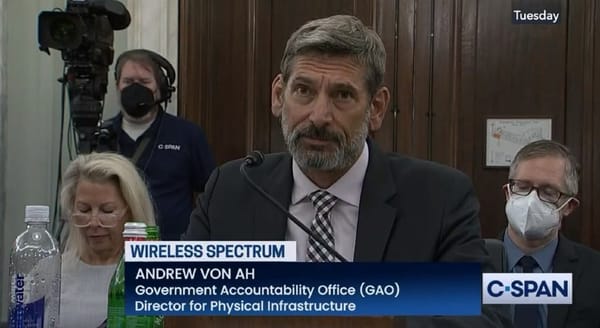WOW! Down 4,500 Broadband Subs, Liberty’s GCI Down 900
WOW! added 2,900 subscribers from its expansion fiber builds.
Jake Neenan

WASHINGTON, May 7, 2025 – WideOpenWest (WOW!) reported a loss of 4,500 broadband subscribers in the first quarter of 2025, for a total of 465,900.

That’s an improvement from last quarter, when Hurricanes Helene and Milton contributed to 10,200 losses, but worse than the first quarter of last year, which saw 3,400 net broadband disconnects.
John Rego, the company’s CFO, guided to subscriber losses between 4,500 and 6,500 for the second quarter.
“We think it is clear that underlying losses are likely to continue for the foreseeable future, where Greenfield expansion is not making up for the losses given the competitive environment, KeyBanc analysts said in a research note. “That said, WOW's Greenfield/Edge-out programs produced its best results since 2Q24, which is potentially a sign that Greenfield/Edge-outs are starting to work.”
WOW! added 2,900 subscribers from those fiber builds, 2,000 from greenfield projects and 900 from the edge-out builds adjacent to the company’s footprint, partially offsetting disconnects in its legacy areas. The company also passed an additional 13,700 greenfield homes and 1,500 new edge-out homes, bringing its expansion footprint to 185,100. The cable operator passes nearly 2 million homes in total.
The company is aiming for 400,000 greenfield passings by 2027, of which 75,600 have been built out.
Last May, WOW! received an unsolicited buyout offer from investment firms DigitalBridge and Crestview – the latter being the cable company’s largest shareholder with a 38 percent stake. The company had formed a special committee to evaluate the proposal, which would value the company at about $400 million.
Executives said they weren’t commenting or taking questions on the status of the offer. KeyBanc analysts wrote that they expect the proposal to be rejected.
The company has a mobile product, but hasn’t been leaning into it as heavily as its cable operator peers. Giants Comcast and Charter have been pushing their mobile plans as a way to help customers stick around longer.
“I would say it is not a big driver of acquisition or necessarily churn reduction for our business,” WOW! CEO Teresa Elder said of the company’s mobile service. “We really have focused on our core product of broadband, along with our YouTube TV services, and just the quality of the service we provide every day, which is continuing to give us extremely good churn levels.”
Liberty/GCI
Alaska-based cable operator GCI lost 900 consumer broadband subscribers in the first quarter, for a total of 155,800. That total is higher than last quarter as a result of 1,000 business customers being reclassified as consumer customers.
Liberty Broadband, which owns GCI, is on track to spin the business off by the summer as part of Charter’s purchase of Liberty. That deal is still expected to close on June 30, 2027. As part of the transaction, Charter bought back $300 million of its shares back from Liberty during the quarter. Liberty, owned by cable billionaire John Malone, owned nearly 26 percent of Charter when the deal was inked in November.
GCI CEO Ron Duncan said the company has “been very heavily focused, like the lower 48 companies, on bundling wireless with broadband” and was “reevaluating our pricing and product mix to see what we could do to increase the stickiness for customers.”
The company lost 200 mobile subscribers in the first quarter, which Duncan said was driven by losses in prepaid and FCC Lifeline subscribers despite postpaid subscriptions growing.
GCI posted $266 million in revenue, above analyst expectations and up 9 percent year-over-year. That’s largely thanks to schools and healthcare centers upgrading their services, a trend Duncan said began in the third quarter of last year.
“It’s important to remember how much of GCI is really enterprise services,” he said. The bulk of the company’s revenue comes from “enterprise services provided to healthcare corporations and schools in rural Alaska, and the largest enterprise customers in the state.”








